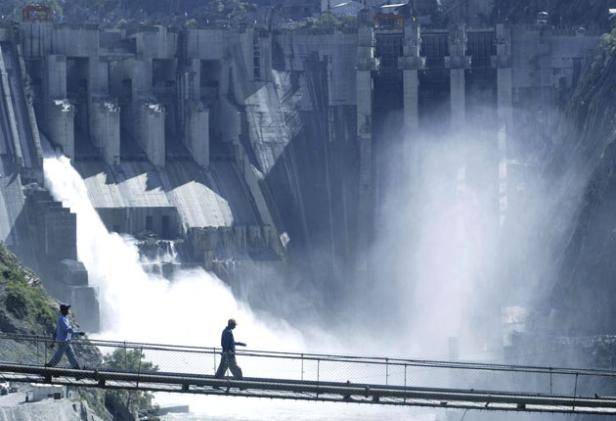If you think in terms of a year, plant a seed; if in terms of ten years, plant trees; if in terms of 100 years, teach the people. – Confucius
Water is the most important ingredient for food and agriculture, and the most basic element to sustain human life. One can survive for eight to ten days without food but without water, for not more than two days. Among other issues related to water, land and air, global warming is a major water resource issue for more than one reason. Its effects on glaciers and permanent snow in the world including those in the central Himalayas, sea ice and polar ice caps elsewhere are one of the major factors in climate change.
In relation to the birth of cities and the so-called urbanization, most historians refer to the Agricultural Revolution and relate it to Mesopotamia, or to South East Asia (according to Carl Sauer, 1952) . However, while these transformations occurred on the river basins of Tigris-Euphrates (Mesopotamia), Nile (Egypt), Huang He (China), Indus (Pakistan) and Mesoamerica, the earlier societies fully realised the importance of dams for the storage of water for irrigation and food production since the natural flows often came at the wrong time. Dams were, therefore, built to store rain water for drinking and irrigation.
For some recent examples of the farsighted and ingenious approaches to the water, food and energy crisis, one could refer to the US, where during dust bowl years of the 1930s, a number of dams were built for collection of rain water for drinking and irrigation by the late President Franklin Roosevelt while the US corps of engineers was raised by President Thomas Jefferson in 1802.
Although in some quarters, the climate changes are considered to be the result of natural cyclic processes “The devastating heat, fires and floods during summer are consistent with trends that scientists say were caused by global warming,” says the Union of Concerned Scientists.
While industrial and Eastern bloc nations cut down their CO2 emissions by 5.2% below 1990 levels between 2008 and 2012, by and large, some fifty countries including China, India, Brazil (which hosted the first Earth summit that led to Kyoto protocol on green house gases emissions) Turkey and Egypt, have in the meantime emerged as new, big emitters. Pakistan, which stands nowhere near the list of big emitters, is the victim of the gaseous emissions produced elsewhere. Suffering already from the receding central Himalayan glaciers in Kashmir, Pakistan is feared to end up ultimately having some 27 million farmers dislodged, says environmentalist, K. Lynas in his incredible book, High Tide.
Although the Rio Summit – Agenda 21 focused on three major themes, environment, population, and women, a group of countries of the southern hemisphere was least inclined to emphasise overpopulation as the main source of environmental degradation vis-à-vis over consumption in the countries of the north. Though the issues of “sustainability and population were clearly connected”. As pointed out by Professors Boone and Modarres, the above stance maintained by the non aligned countries was led by Pakistan and supported by the Vatican in addition to some women’s rights groups.
Planting in hinterland (farm forestry) and in the cities and parks is critical to avert climate warming and the imminent threat of desertification to the Indus basin. The national forestry sector master plan envisaged an increase in forest area from the then 4.8% to 9.8 % by the year 2017. Whatever the targets, however, the area under forests in Pakistan appears to have dwindled to 2.19% today (according to the FAO report titled “Women in Agriculture in Pakistan”, 2015). In Kenya, with 90% of its land stripped of forests in 1977, the planting of some 10 million tree saplings by women farmers jointly is a significant example of mitigating the effects of climate warming in the country.
In Pakistan, with more than 60% of its land degraded, measures such as afforestation, planting of grasses, revegetation, raising of city parks and roadside trees are the need of time. The recent drought in Thar, heat strokes, scarcity of drinking water, are the worst examples of a society suffering political ills. Sydney, in Australia has one of the biggest water supplies in the world, depending on eleven dams for storing of water that is four times the amount of water supply of New York and nine times that of London. Yet Australians feel dissatisfied with it, despite the capacious storage of the city dams. While the need for large dams like Kala Bagh Dam remains long overdue, a network of small dams throughout the country, to preserve flood and rain water and ensure the availability of water for drinking and agriculture, is crucial.
The writer is ex-director NAB, Faisalabad, ex-professor of environmental sciences GCUF, HEC professor UAF., and former member of the New York Academy of sciences, USA.






